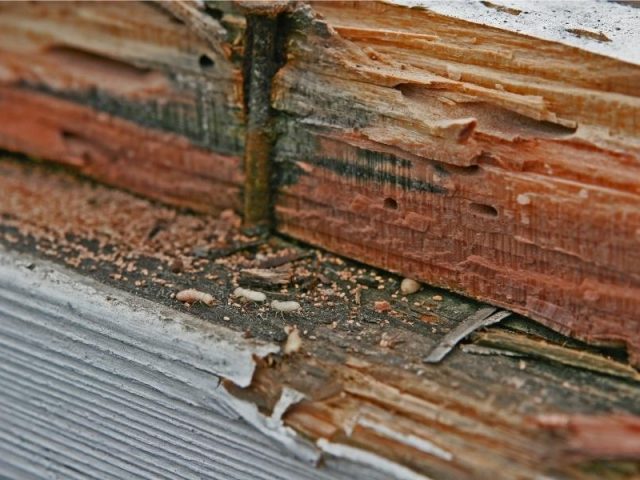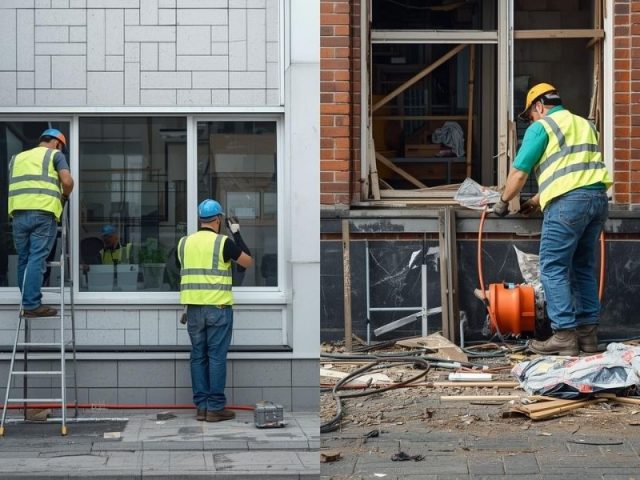Blog
Introduction
Malaysia’s tropical climate, with high humidity levels often exceeding 80% year-round, creates ideal conditions for mould and mildew to thrive, especially in commercial buildings. Moisture intrusion caused by roof leaking, wall cracks, damaged waterproofing systems, plumbing leaks, or toilet leaking can easily trigger fungal contamination in ceiling voids, wall cavities, toilets, pantries, and HVAC systems. In many cases, underlying issues such as failed waterproofing, defective PU injection work, or ageing plumbing lines can worsen dampness, making buildings even more susceptible to mould.
These microbial contaminants not only threaten indoor air quality but also compromise structural materials, leading to long-term building repair needs. Occupants exposed to mould often suffer from respiratory symptoms, skin irritation, or asthma attacks, especially if mould growth goes unnoticed or unmanaged for long periods. For building managers, the implications include tenant dissatisfaction, operational downtime, and costly remediation, further complicated by regulatory, legal, and insurance considerations. In Malaysia, this issue is governed by health and safety frameworks such as the Occupational Safety and Health Act 1994, the Industry Code of Practice on Indoor Air Quality (IAQ) 2010, and specific mould remediation guidelines issued by DOSH [1].
This article explores the causes, detection methods, effective remediation, preventive strategies, and compliance considerations tailored to managing mould in Malaysian commercial buildings.
Causes And Risks In The Malaysian Environment
Malaysia’s wet and humid conditions, particularly during the bi-annual monsoon seasons, provide a perfect breeding ground for mould. Common contributors to mould growth in commercial properties include:
- Leaking roofs or plumbing systems
- Inadequate ventilation in enclosed spaces
- HVAC system condensation
- Poor or damaged waterproofing in toilet floor and roof
- Prolonged indoor humidity exceeding 60%
Mould-related health issues range from mild allergic reactions to serious respiratory distress, especially in sensitive populations such as the elderly or those with compromised immune systems. Mould exposure can also trigger fatigue, skin rashes, sinus problems, and headaches among office workers, contributing to sick building syndrome (SBS) [2].
A study on Malaysian hospitals revealed that newly constructed buildings are not immune, many experience significant mould problems within months of occupancy due to poor moisture control, deficient waterproofing, substandard materials, and ventilation flaws [3]. Beyond health, mould can degrade drywall, ceiling tiles, wallpaper, and wood finishes, lowering property value and requiring costly renovations.
Detection And Assessment
Timely detection of mould is critical to preventing larger outbreaks and long-term structural issues. Facilities should schedule regular inspections, especially with regards to waterproofing systems, particularly after rainy seasons, which specifically focuses on vulnerable areas like washrooms, kitchens, server rooms, and mechanical spaces.
Warning signs include:
- Musty or damp odours
- Visible mould patches (green, black, or brown)
- Bubbling paint, wall stains, or damp surfaces
- Unusual humidity or condensation
- Tenant complaints about indoor air discomfort
The Industry Code of Practice on Indoor Air Quality (IAQ) 2010 recommends systematic indoor air assessments involving physical inspections, humidity monitoring, and microbial sampling [4]. Appointing a certified IAQ assessor is ideal for commercial settings, especially in high-density or sensitive environments such as hospitals, schools, or retail centres.
The National Institute for Occupational Safety and Health (NIOSH) Malaysia offers further guidance through its Indoor Air Quality manual, which outlines standard procedures and preventive maintenance techniques [5].
Remediation Practices
Once mould is detected, swift and proper remediation is essential. The DOSH Guidelines on Control of Moulds Contamination and Remediation outlines two categories of response [1]:
-
- Small-scale contamination (<1m²): May be handled by trained in-house staff with appropriate personal protective equipment (PPE).
- Large-scale contamination (>1m²): Requires professional remediation contractors with experience in biological hazard control.
-
- Isolation of affected areas using plastic sheeting and negative air pressure to prevent spore spread.
- Removal of contaminated materials, such as gypsum board, carpets, and ceiling tiles.
- Disinfection of hard surfaces using fungicidal agents approved by SIRIM or the Ministry of Health.
- Drying and dehumidification to reduce relative humidity below 60%.
- Repair of underlying moisture sources, including roof leaks, AC condensation drains, or plumbing issues.
- Post-remediation verification, involving air sampling and visual inspection.
Prevention And Long-Term Management
To reduce the recurrence of mould, Malaysian commercial buildings must prioritize moisture prevention and ventilation. A combination of engineering controls, maintenance protocols, and material choices can significantly minimize risk.
Recommended practices:
- Maintain indoor humidity below 60%, ideally between 40–50%, with sensors in basements, pantries, and mechanical rooms [5].
- Install or upgrade exhaust fans in restrooms, kitchens, and basements. Ensure HVAC systems are regularly cleaned and balanced to avoid condensation build-up.
- Inspect waterproofing on roofing, ceilings, and external walls before and after monsoon seasons.
- Inspect plumbing systems and internal waterproofing to prevent leakage from washrooms, sinks and mechanical/electrical rooms.
- Use mould-resistant materials, such as vinyl flooring, cement boards, and anti-fungal coatings in high-moisture areas.
- Educate tenants and staff to recognize early mould signs and report leaks or ventilation issues immediately.
In addition, integrated building design and maintenance strategies ensures that moisture and microbial contamination remain under control in both new and existing structures [7].
Regulatory, Legal & Insurance Considerations
Building owners and facility managers in Malaysia are legally responsible for maintaining safe indoor environments under the Occupational Safety and Health Act 1994. Negligence in addressing mould-related issues could lead to legal action, DOSH penalties, or tenant claims related to health damage or breach of lease terms.
The IAQ Code of Practice mandates [4]:
- Regular inspections and IAQ assessments
- Documentation of remediation activities
- Training for maintenance staff
- Provision of adequate ventilation systems
Insurance companies in Malaysia may not cover mould-related damage unless the policy explicitly includes endorsements for fungi, biological agents, or water intrusion. In many cases, insurers require evidence of proactive moisture management and timely remediation [8].
Maintaining records of inspections, complaints, repairs, and IAQ measurements helps support insurance claims and protects building owners in the event of disputes.
Conclusion
Mould and mildew remain persistent challenges in Malaysia’s humid and rain-prone environment, especially in buildings where moisture intrusion is linked to roof leaking, wall cracks, plumbing defects, or failing waterproofing systems. Effective mould management requires not only remediation but also addressing root causes through building repair, such as repairing internal leaks, improving waterproofing performance, or conducting PU injection and grouting for cracks that allow moisture to penetrate.
Long-term prevention involves a combination of ventilation improvements, humidity control, routine inspections, and prompt rectification of defects. Ensuring that toilet problems, balcony leakage, or roof repair needs are resolved early helps prevent recurrent dampness and reduces the likelihood of mould reappearing.
By integrating proper moisture control with regulatory compliance, trained personnel, and timely maintenance, building owners can protect indoor air quality, safeguard occupant health, minimise operational disruptions, and extend the service life of commercial properties. Addressing both mould growth and the underlying causes of water leakage ensures a safer, more resilient, and better-performing environment for building occupants.
References
[1] Department of Occupational Safety and Health (DOSH) Malaysia (2019). Guidelines on control of moulds contamination and remediation. Retrieved on 28th May 2023 from https://intranet.dosh.gov.my/index.php/ms/competent-person-form/occupational-health/perundangan-1/garis-panduan/kimia/3330-guidelines-on-control-of-moulds-contamination-and-remediation-2019-1
[2] Medklinn (2018). Mold in office could make you sick. Retrieved on 28th May 2023 from https://my.medklinn.com/medklinn_life/mould-in-office-could-make-you-sick/
[3] Parham, H. F., Ishak, N. H., & Hassan, Z. F. A. (2019). Mold growth risk in a newly built hospital building in Malaysia – Problems and solutions. Journal of Design and Built Environment, Special Issue (1), 16–25. Retrieved on 28th May 2023 from https://ejournal.um.edu.my/index.php/jdbe/article/download/12155/7901/23792/
[4] Department of Occupational Safety and Health (DOSH) Malaysia. (2010). Industry code of practice on indoor air quality (IAQ). Retrieved on 28th May 2023 from
https://medicine.um.edu.my/pdf/OSHE/resources/4.%20Industrial%20Code%20of%20Practice%20(ICOP)/ICOP%20INDOOR%20AIR%20QUALITY%20(IAQ)%202010.pdf
[5] National Institute for Occupational Safety and Health (NIOSH) Malaysia (n.d.). Indoor air quality. Retrieved on 28th May 2023 from http://www.niosh.com.my/images/Publication/Brochure/Indoor-Air-Quality.pdf
[6] Centers for Disease Control and Prevention (CDC) (2019). NIOSH dampness and mould assessment tool. Retrieved on 28th May 2023 from https://www.cdc.gov/niosh/docs/2019-115/default.html
[7] World Health Organization (WHO) (2009). WHO guidelines for indoor air quality: Dampness and mould. Retrieved on 28th May 2023 from https://www.who.int/publications/i/item/9789289041683
[8] Medklinn (2018). How to get rid of mould in your home. Retrieved on 28th May 2023 from https://my.medklinn.com/medklinn_life/how-to-get-rid-of-mould-in-your-home/



